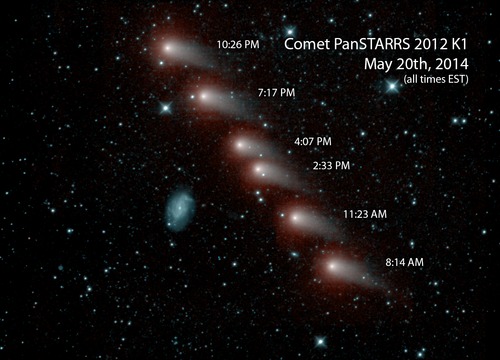Infrared Sequence of a Comet and Distant Galaxy

Credit: NASA/JPL-Caltech
Observation • July 3rd, 2014
NASA's NEOWISE mission captured this series of pictures of comet C/2012 K1 -- also known as comet Pan-STARRS -- as it swept across our skies on May 20, 2014. The comet is relatively close to us -- it was only about 143 million miles (230 million kilometers) from Earth when this picture was taken. It is seen passing a much more distant spiral galaxy, called NGC 3726, which is about 55 million light-years from Earth, or 2 trillion times farther away than the comet.
This multiple exposure shows the comet's progression through the solar system during a period of just over 14 hours, as seen projected against the background stars and galaxies.
The image was made from data collected by the two infrared channels onboard the NEOWISE spacecraft, with the longer-wavelength channel (centered at 4.5 microns) mapped to red and the shorter-wavelength channel (3.4 microns) mapped to cyan.
Download Image
- JPG
- TIF







